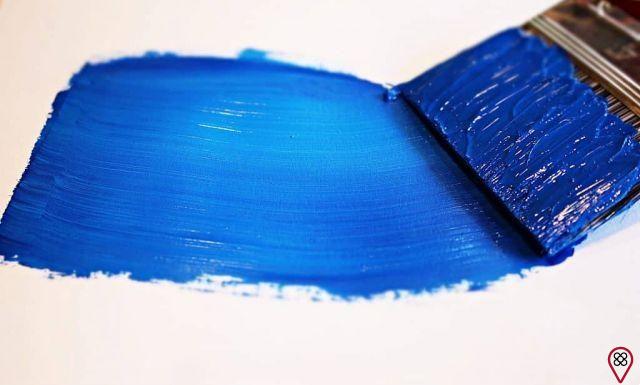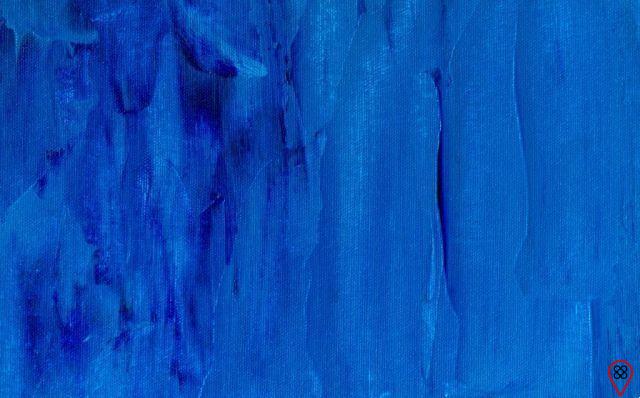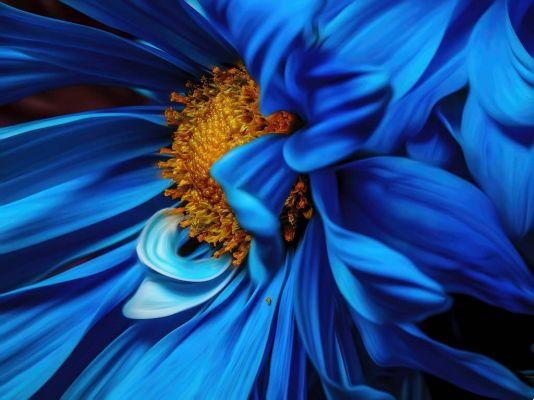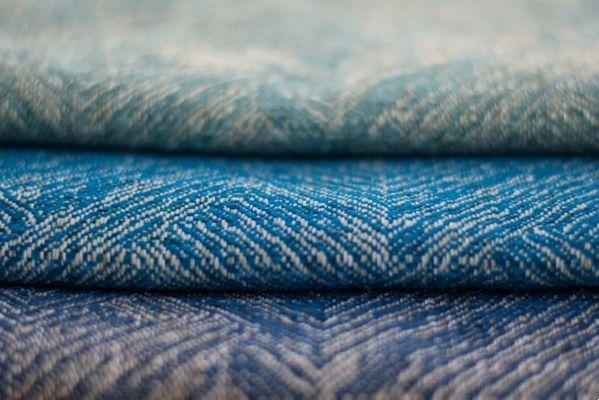Indigo is a blue color, one of the darkest and deepest shades between blue and violet, which makes up the rainbow, found by Isaac Newton. It was one of the most used colors in the textile and graphic industries of antiquity and is widely applied today in clothes made with jeans. Learn more about this color and what it represents!
The indigo blue color had its use registered in Egypt, Greece, Rome, Peru and Iran, but the starting point to spread its use was India, where the first works were made using its dyeing.
Etymology

The name indigo was known in antiquity as indigo and glastus, depending on how the extraction of dyes was obtained or depending on the plants from which these dyes were extracted. It could be obtained from Indigofera tinctoria, from Indigofera suffruticosa, while glast was obtained from Isatis tinctoria. Although the way to obtain glastus and indigo is different, since for each there is a specific plant, they are considered synonymous.
The term indicus, which means “from India” in Latin, refers to the name of the dye imported from that country. In 1955, the term was incorporated into our language.
History

One of the oldest known uses of this color occurred in the Peruvian Andes, 1500 years before the Egyptians, contradicting the belief that the first uses had been in ancient Egypt for dyeing mummy bandages, in approximately 1580 BC.
The pharaoh, in ancient Egypt, was the only one who used color, due to the fact that the process of extracting the pigment was expensive, which ended up conferring the hierarchical social and political importance that it occupied.
Marco Polo's travel records include India as the world's oldest indigo dyeing center and the first supplier of the color to Europe, Rome and Greece.
A type of dye with the same tone characteristics was discovered by the Mayans in the pre-Columbian era, later called Mayan blue.
Indigo remained an important color throughout the Middle Ages and was even obtained in a similar shade by extracting the substance from another plant.
The main suppliers of raw material for obtaining indigo were Venezuela, Jamaica and South Carolina, as soon as the Americas were conquered.
It was in the XNUMXth century that it became possible to obtain color through a synthetic chemical procedure and no longer through plants.
Indigo color therapy

Indigo is used in chromotherapy to treat people who need to overcome fear or have mental illness.
In the Hindu religion, it corresponds to the third eye chakra, known as Ajna, the sixth chakra and is located between the eyebrows. It is linked to intuitive abilities and subtle perception.
The pineal gland, located in the center of the brain and in the middle of the forehead, in turn, is related to intuitive abilities and subtle perception and has similarities with the eyeball, hence the third eye.
Color helps in the development of a better awareness of the being, in the understanding of life situations and in the fullness of existence. It promotes serenity and self-knowledge. It is applied to purify, cleanse, clear, relax and release the mind and physical body from fears, destructive thoughts, feelings of inferiority and phobias.
It is still used in healing treatments for vision, hearing, sleep disorders, nightmares, headaches, depression and anything that involves destabilizing the brow chakra.
Meaning

From its origins, the indigo color is related to royalty, luxury and wealth. It was used on coats of arms to portray the nobility of the family.
It is also assigned a meaning of spirituality, knowledge, creativity, intuition and heightened perception.
People who have it in their aura are humble, affectionate and focused on intellectuality and spirituality.
Other meanings associated with color are: authenticity, trust, friendship, reason, logic and self-knowledge.
Indigo is a cultural symbol of the Tuareg, a nomadic people of the Sahara desert, whose men cover their heads with tagel musts dyed in that color and for whom both fabric and tone represent greater or lesser social importance.
The Jeans Model 501, patented in 1873 by Levi Strauss, was initially produced in a color other than indigo. From the last decade of the 1960th century, it started to be dyed blue, but with anilines. In the 1970s and XNUMXs, pants were popularized in Europe and the United States and became a symbol of rupture with the system, an icon of freedom and emancipation, giving indigo the idea of transformation.
How to get indigo color?

It is possible to obtain the indigo color through two processes: one natural and the other artificial.
In the natural process, the leaves of the Indigofera tinctoria and Indigofera suffruticosa plants are macerated and, as soon as oxidation occurs, the specific shade between dark blue and violet appears. Then a paste is made and from it any material is dyed.
It is also possible to obtain the color using lapis lazuli and the paste obtained from the Indigofera arrecta plant as a source.
The artificial process was developed in the late XNUMXth and early XNUMXth centuries by the German chemist Adolf von Baeyer, without industrial results, as it did not prove to be financially viable and economical.
It was the Swiss Karl Heumann who, in the laboratory, reached the ideal synthesis of the indigo color and extended it to other laboratories and industries that started to produce the pigment called Prussian blue.
When to use indigo color?

The indigo color can be used when there are vision and hearing disorders, inflammatory processes, for labyrinthitis, to restore balance and inner peace, to influence positivity and concentration and to eliminate headaches.
If used in environments loaded with tension, the color will provide release and, in cases of illness, the direct light in the affected region, helps in the inflammatory processes and acts as an anesthetic, anti-hemorrhagic and healing.
How to use indigo color

The indigo color can be used in the lighting of home or work environments (if there is such freedom), in decoration objects, in the colors of clothes and accessories, in food or by visualizing a beam of color light over a needy area.
Color applications in everyday life
The most common use of indigo blue is in cotton and denim clothing, but it is also used to give a deep tone to wool, as a food coloring and in the detection of kidney abnormalities.
too much indigo color

Anything out of balance can cause damage. So too with overuse of the color indigo, as it can trigger distorted feelings of superiority, egocentrism, and megalomania.
As you can see, indigo blue is an ancient, mental and deep color. Very common in jeans, people are used to it and a large part of the world population has it as their favorite color.
You may also like
- Discover the Deep Meaning of Indigo Awakening
- Know how to identify the Indigo people around you
- Understand how colors can heal people!
In some companies and television stations, there is an incentive to use the indigo blue color in clothing, because it is attributed a characteristic of respect and seriousness. Reflect on the subject and evaluate the degree of importance that this color has for you. Also meet chromotherapy!

























